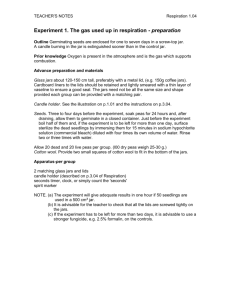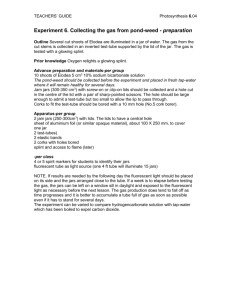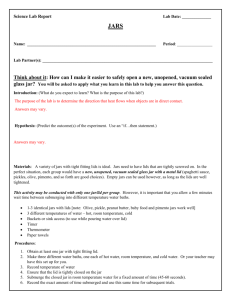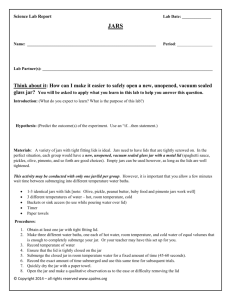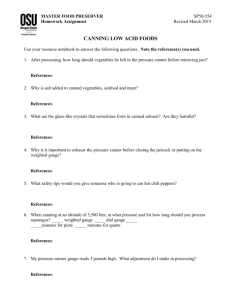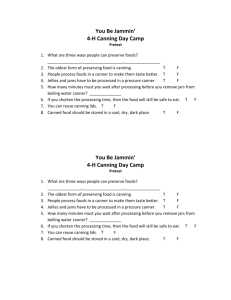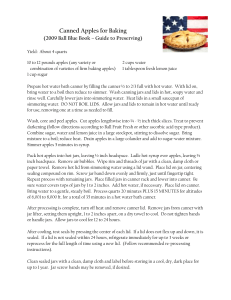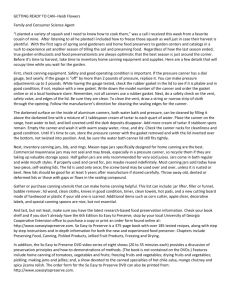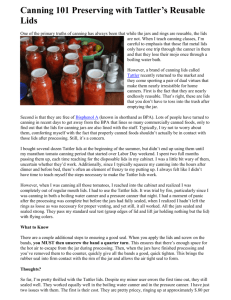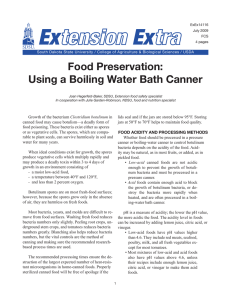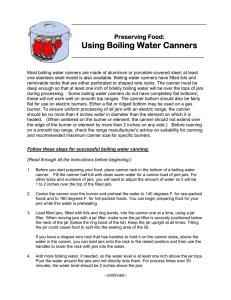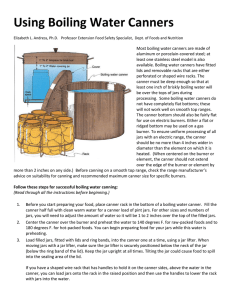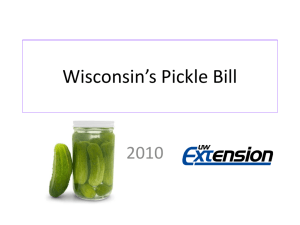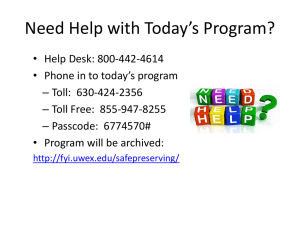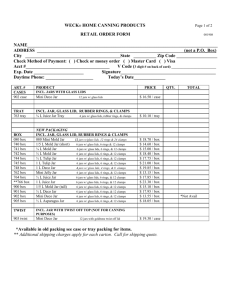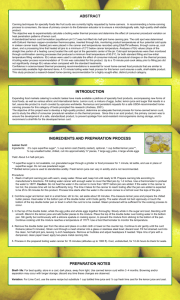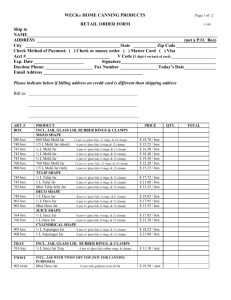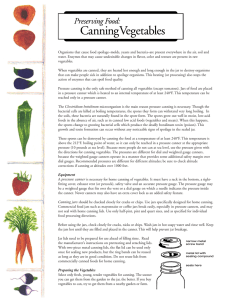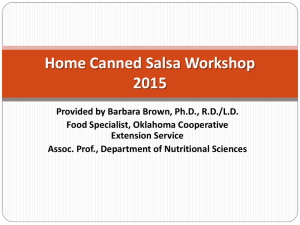Weigl-Boiling Instructions
advertisement
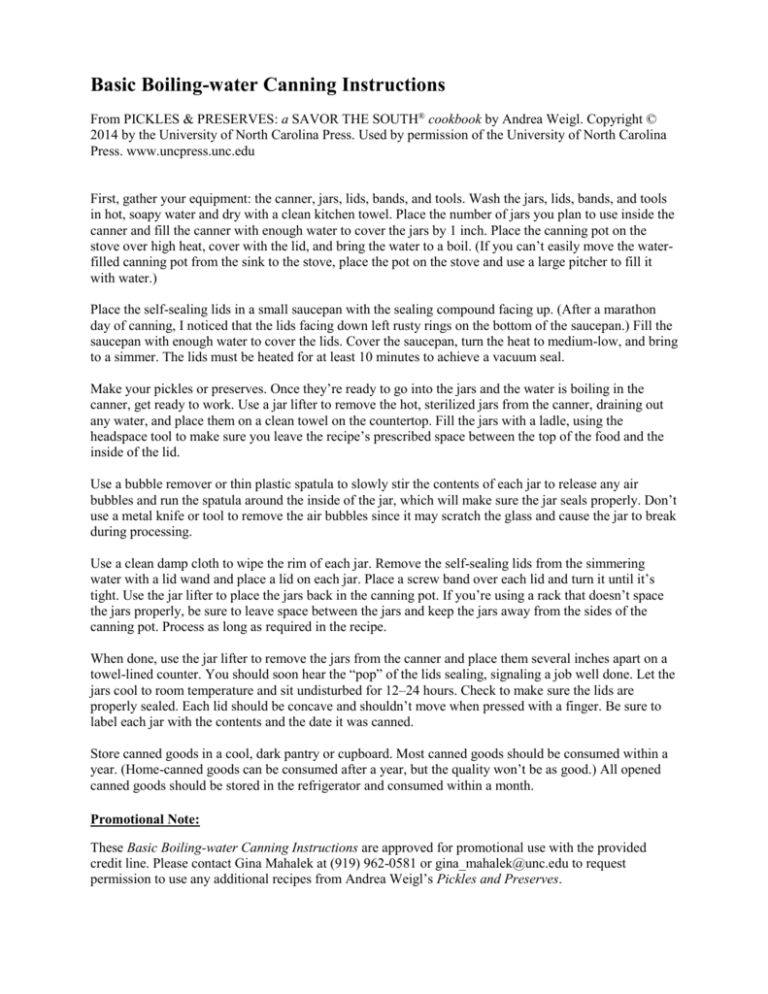
Basic Boiling-water Canning Instructions From PICKLES & PRESERVES: a SAVOR THE SOUTH® cookbook by Andrea Weigl. Copyright © 2014 by the University of North Carolina Press. Used by permission of the University of North Carolina Press. www.uncpress.unc.edu First, gather your equipment: the canner, jars, lids, bands, and tools. Wash the jars, lids, bands, and tools in hot, soapy water and dry with a clean kitchen towel. Place the number of jars you plan to use inside the canner and fill the canner with enough water to cover the jars by 1 inch. Place the canning pot on the stove over high heat, cover with the lid, and bring the water to a boil. (If you can’t easily move the waterfilled canning pot from the sink to the stove, place the pot on the stove and use a large pitcher to fill it with water.) Place the self-sealing lids in a small saucepan with the sealing compound facing up. (After a marathon day of canning, I noticed that the lids facing down left rusty rings on the bottom of the saucepan.) Fill the saucepan with enough water to cover the lids. Cover the saucepan, turn the heat to medium-low, and bring to a simmer. The lids must be heated for at least 10 minutes to achieve a vacuum seal. Make your pickles or preserves. Once they’re ready to go into the jars and the water is boiling in the canner, get ready to work. Use a jar lifter to remove the hot, sterilized jars from the canner, draining out any water, and place them on a clean towel on the countertop. Fill the jars with a ladle, using the headspace tool to make sure you leave the recipe’s prescribed space between the top of the food and the inside of the lid. Use a bubble remover or thin plastic spatula to slowly stir the contents of each jar to release any air bubbles and run the spatula around the inside of the jar, which will make sure the jar seals properly. Don’t use a metal knife or tool to remove the air bubbles since it may scratch the glass and cause the jar to break during processing. Use a clean damp cloth to wipe the rim of each jar. Remove the self-sealing lids from the simmering water with a lid wand and place a lid on each jar. Place a screw band over each lid and turn it until it’s tight. Use the jar lifter to place the jars back in the canning pot. If you’re using a rack that doesn’t space the jars properly, be sure to leave space between the jars and keep the jars away from the sides of the canning pot. Process as long as required in the recipe. When done, use the jar lifter to remove the jars from the canner and place them several inches apart on a towel-lined counter. You should soon hear the “pop” of the lids sealing, signaling a job well done. Let the jars cool to room temperature and sit undisturbed for 12–24 hours. Check to make sure the lids are properly sealed. Each lid should be concave and shouldn’t move when pressed with a finger. Be sure to label each jar with the contents and the date it was canned. Store canned goods in a cool, dark pantry or cupboard. Most canned goods should be consumed within a year. (Home-canned goods can be consumed after a year, but the quality won’t be as good.) All opened canned goods should be stored in the refrigerator and consumed within a month. Promotional Note: These Basic Boiling-water Canning Instructions are approved for promotional use with the provided credit line. Please contact Gina Mahalek at (919) 962-0581 or gina_mahalek@unc.edu to request permission to use any additional recipes from Andrea Weigl’s Pickles and Preserves.
